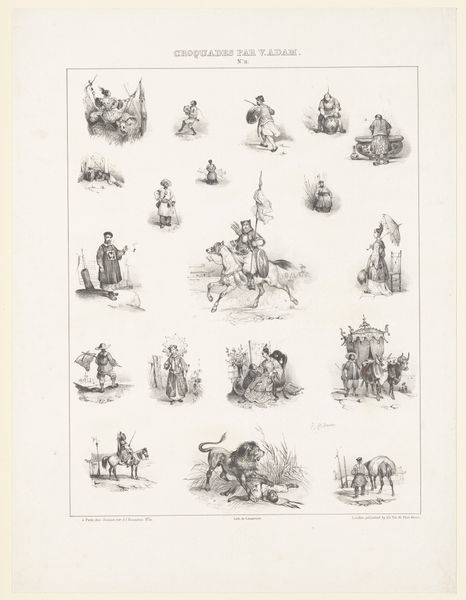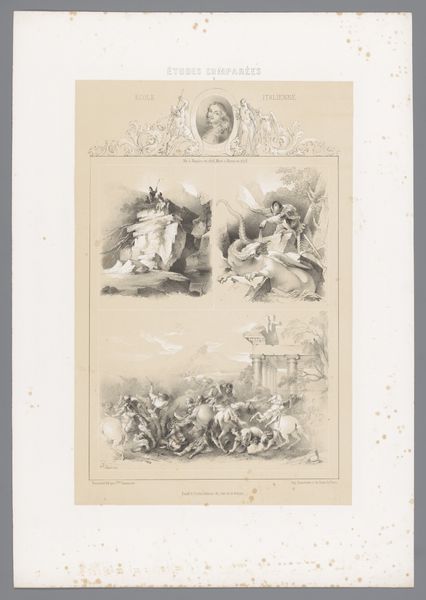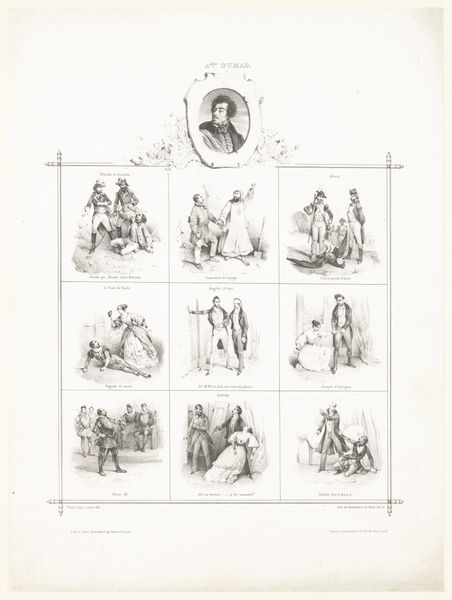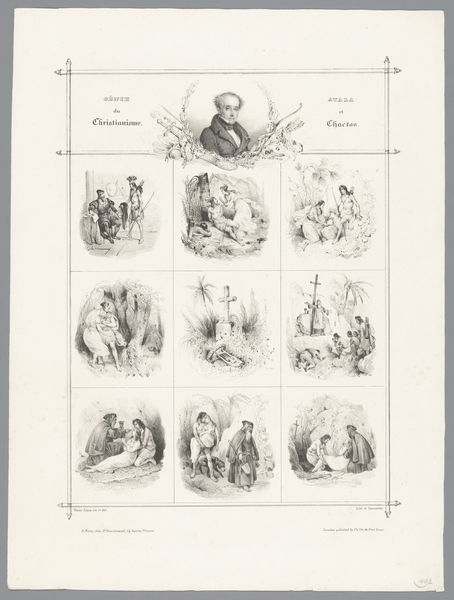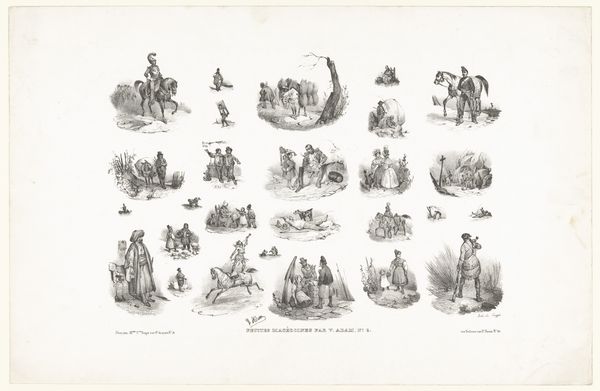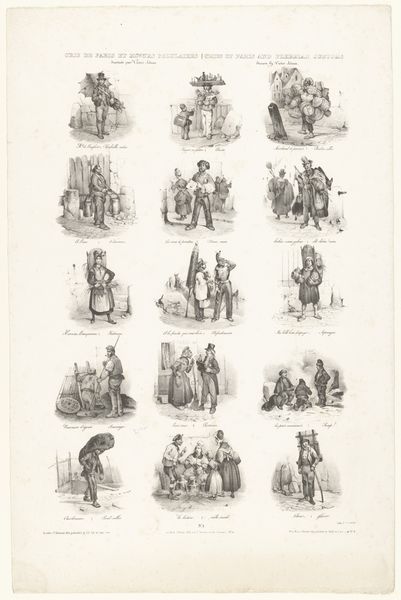
Portret van Pierre-Jean de Béranger en zestien voorstellingen uit zijn gedichten 1835
0:00
0:00
victoradam
Rijksmuseum
drawing, lithograph, print, pen
#
portrait
#
drawing
#
comic strip sketch
#
quirky sketch
#
narrative-art
#
lithograph
# print
#
sketch book
#
personal sketchbook
#
idea generation sketch
#
sketchwork
#
romanticism
#
sketchbook drawing
#
pen
#
genre-painting
#
storyboard and sketchbook work
#
sketchbook art
#
initial sketch
Dimensions: height 362 mm, width 274 mm
Copyright: Rijks Museum: Open Domain
Curator: This lithograph from 1835 by Victor Adam is called "Portret van Pierre-Jean de Béranger en zestien voorstellingen uit zijn gedichten," now held at the Rijksmuseum. It seems to be both a portrait and a narrative artwork. Editor: My first impression is that this is delightful—a playful assembly of scenes and portraits, reminiscent of a detailed story board. The contrast between the formal portrait and the informal sketches makes for a charming whole. Curator: Indeed. Let's start with the construction itself. Adam has positioned a formal portrait of Béranger centrally, flanked by cherubic figures, evoking a kind of romantic idealism. Surrounding this are sixteen vignettes from Béranger's poems, carefully arranged and framed. The medium is a lithograph. Can you comment on the materiality of the print itself? Editor: Absolutely. The lithographic process allows for a certain textural softness, a gradient from light to dark, seen in these smaller scenes. What interests me are the choices Adam makes with ink, the controlled hand that allows for detail while maintaining the sense of quick sketches. It's both reproducible and intimately crafted. It feels less about hierarchy, and more like collaboration and accessibility between artist and poet. Curator: An astute point about accessibility. Béranger's poems were popular among the working class. Do you think this choice of medium influenced how the poem was recieved? Editor: Definitely. The material accessibility of lithography democratizes the work, putting it into more hands and homes than perhaps an oil painting could. Think of the means of production, distribution. Its inherent portability meant it could be shared and enjoyed in multiple contexts. Curator: So the artwork functions not just as illustration but also a social artifact, demonstrating Romanticism's influence and an insight into the cultural moment in which Béranger wrote. Editor: Precisely. Considering how prints would have moved in the world shifts our understanding beyond just aesthetic enjoyment. Curator: Fascinating. By exploring the work’s materiality and construction, we uncover deeper meanings. Editor: I agree. Examining how the artist worked to convey and circulate the work really opens a window to the 19th century's art production.
Comments
No comments
Be the first to comment and join the conversation on the ultimate creative platform.


